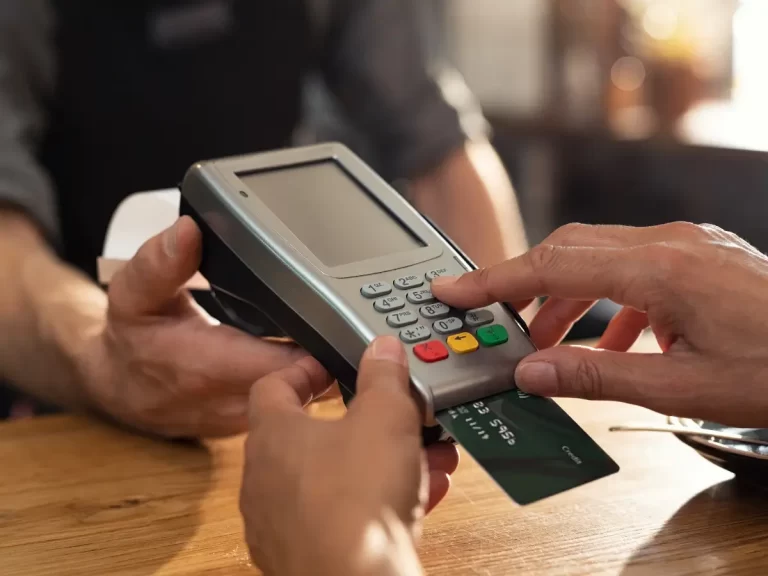Have you ever been to a store that offers a lower price for cash payments instead of credit cards? It’s a tempting offer, isn’t it? Cash discounting, also called dual pricing, is a smart business move that is not just a trend but also powerful.
Dual pricing can be helpful for different businesses. Here are some examples of companies that may want to consider cash discount credit card processing:

Small Businesses with Limited Profit Margins
Small businesses with narrow profit margins may benefit from a dual pricing program. By passing on the cost of accepting credit card payments to customers, these businesses can offset the payment processing costs and increase their profitability. Such businesses include restaurants, diners, pizzerias, and similar venues.
Businesses with a High Volume of Credit Card Transactions
Imagine a bustling marketplace where every swipe sings the sweet serenade of profits. But wait, hold on! Those enchanting swipes often come with a hidden chorus of credit card processing fees, their discordant melody chipping away at your business’s bottom line. Fear not, for a knight in shining armor stands ready to vanquish these financial foes – the noble dual pricing strategy.
Dual pricing lets you, the valiant business owner, offer two distinct price options for your wares: one for the ease of plastic and another, slightly lower, for the crisp charm of cash. This way, customers who choose the convenience of credit cards help shoulder the burden of those pesky processing fees, while cash-paying patrons are rewarded with immediate savings.

Businesses that Sell Higher-Priced Products or Services
Dual pricing can also be a good option for businesses that sell higher-priced products or services. In these cases, the fee charged for credit card transactions may be more significant, so the ability to offset these fees can be especially valuable. Examples of such businesses are auto repair shops, doctor’s offices, medspas, etc.
Retail Businesses
Cash discounts can also be useful for retail firms since they streamline the checkout process and decrease the possibility of mistakes or confusion at the point of sale. These companies can increase customer transparency and cut their processing expenses by adding fees to card transactions and showing both a card price and a cash price.
Businesses with Price-Sensitive Customers
Finally, dual pricing may be a suitable choice for companies that serve customers who are price-sensitive. By offering a cash discount, these businesses can incentivize customers to pay with cash or check, which can help reduce the number of card transactions they need to process and the associated fees.
Advantages of Cash Discount or Dual Pricing Model
In the bustling marketplace, cash and credit cards dance a delicate tango. While convenience often sways towards plastic, a whisper of savings beckons in the rustling bills. This quiet champion, the cash discount or dual pricing strategy, holds a surprising waltz of benefits for both businesses and customers, ready to sweep them off their feet.
For businesses, it’s a magic wand waving away the hefty fees clinging to credit card transactions. Each cash clink becomes a golden coin dropped into the till, plumping up profits like a freshly baked croissant. And the cash flow? Imagine a gushing river, swiftly delivering settlements and fueling operations with immediate access to hard-earned revenue. No more waiting in line for bank deposits, just a constant stream of financial fuel propelling the business forward.
But the magic doesn’t stop there. Cash discounts whisper sweet nothings in customers’ ears, transforming them into budget-savvy ninjas. Every swipe translates to instant savings, like finding a hidden coupon code for life. Transactions become streamlined, a smooth sailing experience on the payment seas, free from the technological hiccups and security concerns that can dampen shopping sprees. And for those who value control, cash in hand becomes a treasure map to responsible spending habits and a brighter financial future
Cost savings
Dual pricing can save merchants money on credit card processing fees, which is one of its key benefits. Merchants can reduce the costs paid to payment processors by passing along the expense of taking credit card payments to customers. Small businesses that have to cut costs everywhere possible and have tight profit margins may find this extremely helpful.
Enhanced cash flow
Encouraging customers to pay in cash can lead to improved cash flow. This can be particularly beneficial for small businesses that must manage their liquidity closely.
Increased transparency
Increased payment process transparency is another benefit of cash discounts or dual pricing. Customers can better understand the true cost of using a credit card and make more informed decisions about their payment options. As a result of their potential appreciation for the merchant’s pricing’s honesty and transparency, customers may become more loyal.
Simplified checkout process
This approach can also simplify the checkout process for both merchants and customers. Instead of dealing with separate pricing for cash and credit card transactions, merchants can set a single price for their products or services and apply the fee only to credit card transactions. This can help speed up the checkout process and reduce the risk of errors or confusion at the point of sale.
Overall, cash discounts or dual pricing can be an effective way for merchants to save money on processing fees, simplify the checkout process, and increase transparency in the payment process.
Conclusion
For many businesses, a cash discounting program can be a useful tool. However, it might be especially helpful for small businesses with slim profit margins that handle many credit card transactions and offer more expensive goods and services.
If you need help sorting out a payment processing solution for your business, contact Max Value Processing! We are an expert merchant service provider that can help scale your business’s profitability.
If you need help with your business’ payment solution, Contact us today!

FAQs
Yes, dual pricing and cash discounts are essentially the same thing. They both refer to a pricing model where businesses offer a discount to customers paying with cash instead of a credit card.
Dual pricing refers to displaying two different prices for the same item, one for cash and one for credit.
Cash discount can refer to any discount offered to customers for paying with cash. For example, a restaurant might offer a 10% cash discount to customers who dine in.
Surcharging is a practice where businesses add a fee to the purchase price when customers pay with a credit card. This fee is typically used to offset the cost of credit card processing fees.
On the other hand, Dual pricing offers a discounted price to customers who pay with cash instead of a credit card. This discount typically encourages customers to pay cash and reduce credit card fees.
Whether to use surcharging or dual pricing depends on your specific business needs and goals.
No, cash discounting is legal in all 50 states. The Durbin Amendment to the Dodd-Frank Wall Street Reform and Consumer Protection Act specifically exempted cash discounts from the prohibition on credit card surcharges.

